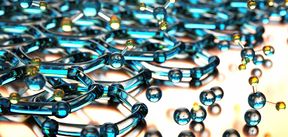AQP Seminar: Towards a continuous and efficient microwave photon-counter using semiconductor-superconductor hybrids

When
Where
Event language(s)
Abstract:
An efficient and continuous microwave sensor with the ability to read out individual photons is a crucial element for emerging technologies, including quantum information processing and quantum key distribution. Besides the potential application in quantum devices, a highly efficient microwave detector provides an excellent platform to investigate fundamental aspects of quantum optics, photon statistics, and quantum electrodynamics. Over the past few decades, extensive research has been performed to develop high-efficiency photodetectors with a continuous mode of operation. Most of this research relies on the absorption of photons across a semiconductor bandgap followed by the detection of photo-excited charge carriers [Nat. Nanotechnol 9, 780 (2014)]. Even though the technology is now well-developed for UV-Vis-infrared radiations, a microwave counterpart remained elusive except in recent years. This is mainly because microwave photons contain four to five orders of magnitude smaller energy than a visible photon making them difficult to detect by the conventional approach. The limitations of having such a small bandgap semiconductor can be avoided by using discrete energy levels of a double quantum dot system. A microwave photon is then absorbed when the energy detuning between the dots matches the energy of incident photons. In this process, an electron tunnels from one dot to another resulting in a photocurrent in the system. To achieve a near-unity efficiency, the combination of a high-quality factor superconducting resonator in the close vicinity of a double-quantum dot has also been proposed [Phys. Rev. A 95, 012325 (2017)]. More recently, W. Khan et al. [Nat. Commun. 12, 1 (2021)] demonstrates that such a semiconductor-superconductor hybrid scheme can achieve a maximum photoconversion efficiency of 6%. Here, we present a second generation of the microwave photodetector with an additional (third) quantum dot to count photon-absorption events. Our semiconductor-superconductor hybrid device is realized by Nb coplanar waveguide resonator and an InAs polytypes nanowire quantum dots. The new generation photodiode, with one port resonator geometry and improved filtering to reduce photon leakage, exhibits a continuous photoconversion efficiency of 24%. The additional detector dot in the device capacitively couples to the double dot system and probes photon-assisted tunnelling events by measuring the charge state of the double dots. Thus, our device offers the possibility to investigate various aspects of quantum optics with applications in quantum devices enabling single-shot readout.
- Published:
- Updated: